There are numerous reasons why you'd want to break a broody hen, and nearly as many ways to do it.
Your first experience with a broody hen is always one to remember.
Whether it's because your tiny dinosaur growled at you each time you walked into the coop, or you were viciously pecked by an angry wannabe mama, it sticks with you!
Our first time dealing with a broody was the first fall after we got chicks. We were chicken newbies, just clucking along, and out of nowhere, our friendliest gal became the meanest, nastiest, loudest hen in the whole group.
We could not go into the chicken coop without her growling and puffing up. She was never happy. Do you know what she was?
She was broody with a capital B!

As an Amazon Associate I earn from qualifying purchases.
Jump to:
What Does It Mean When A Chicken Goes Broody?
Congratulations, you're about to become a chicken grandparent!
Just kidding - kinda.
Generally speaking, hens reach maturity (laying age) between 5 and 8 months old. Depending on the breed, some are more likely than others, your hen can go broody pretty much any time once after she comes into lay, though it's much more common in the springtime.
When a hen goes broody, she wants to be a momma! She stops laying eggs and gets this wild idea that she is now the mother of all the eggs in her coop. She'll puff up her feathers, make a low growling sound when you approach her and refuse to leave the nest for anything.
To put it simply, she's trying to hatch eggs. Her hormones are telling her that it's baby time and trust me, you are NO match for those hormones.

Signs Of Broodiness
There are some other obvious signals that your hen has the broodiness!
- Refusal to leave the nesting box
- Your hen has stopped laying eggs
- Sitting in the nest, even if there are no eggs present
- Broody poops (large, stinky poops as a result of leaving the nest only once per day)
- Stockpiling eggs laid by other hens
- Puffing up and growling when you go near
- Pecking your hands when you try to collect eggs
- Chasing off other hens from her nest box
- Bare breast or soft breast feathers in the nesting box from plucking
- Aggressive behavior, including fluffing out feathers and wings to appear larger and more intimidating
- Clucking and vocalizations you haven't heard before
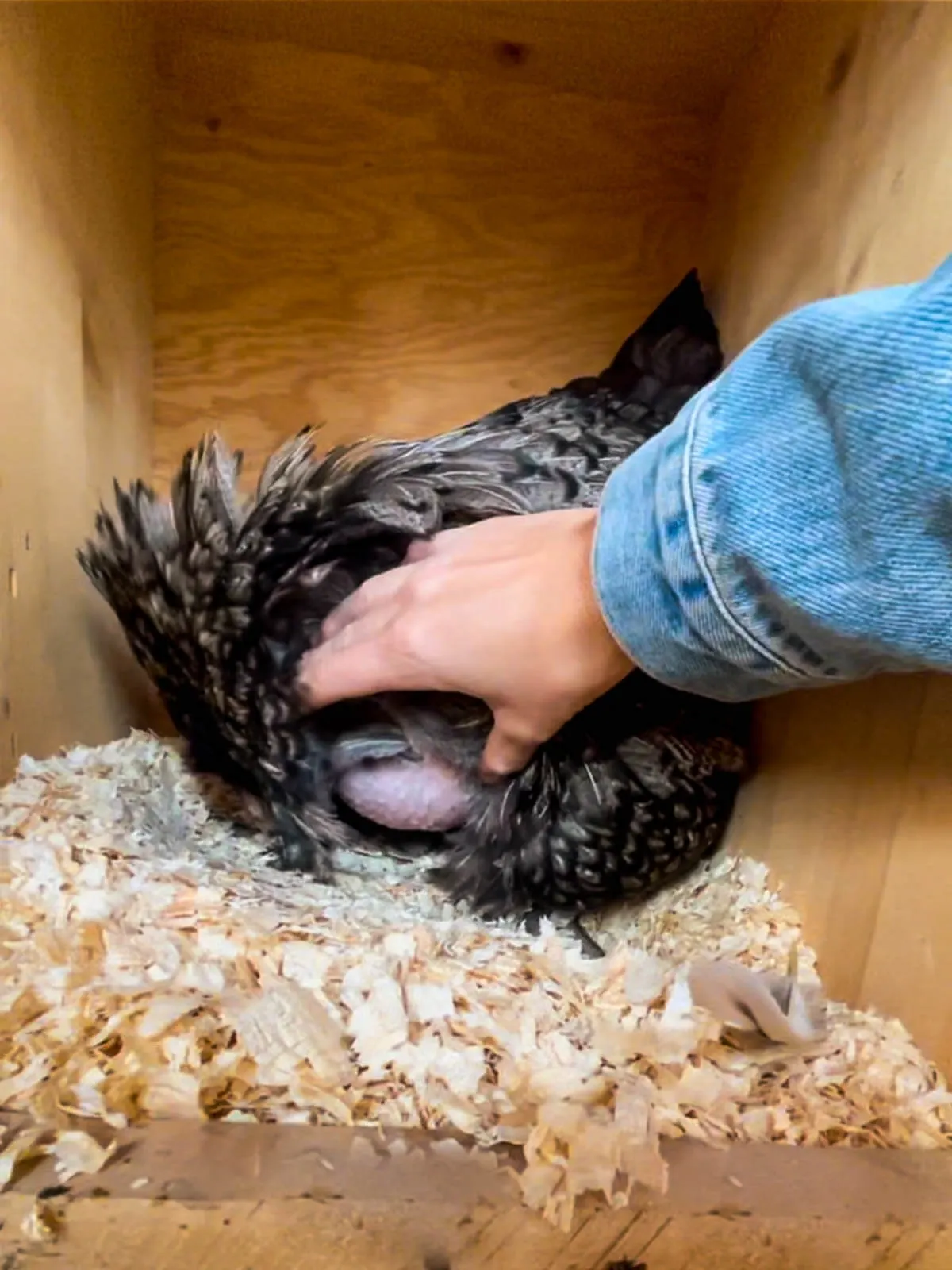
Reasons You May Not Want A Broody Hen
Egg Production:
A broody hen will not lay eggs while she is sitting on her nest. This means that if you rely on your hens for eggs, you won’t get any from her during the time she is broody, and subsequently brooding her chicks. Her focus is on the babies and not your breakfast.
Bad Attitude:
Your broody will become very protective of her eggs and may become aggressive towards other chickens or people who come near her nest. This can cause stress in the flock and among the chicken tenders in your family!
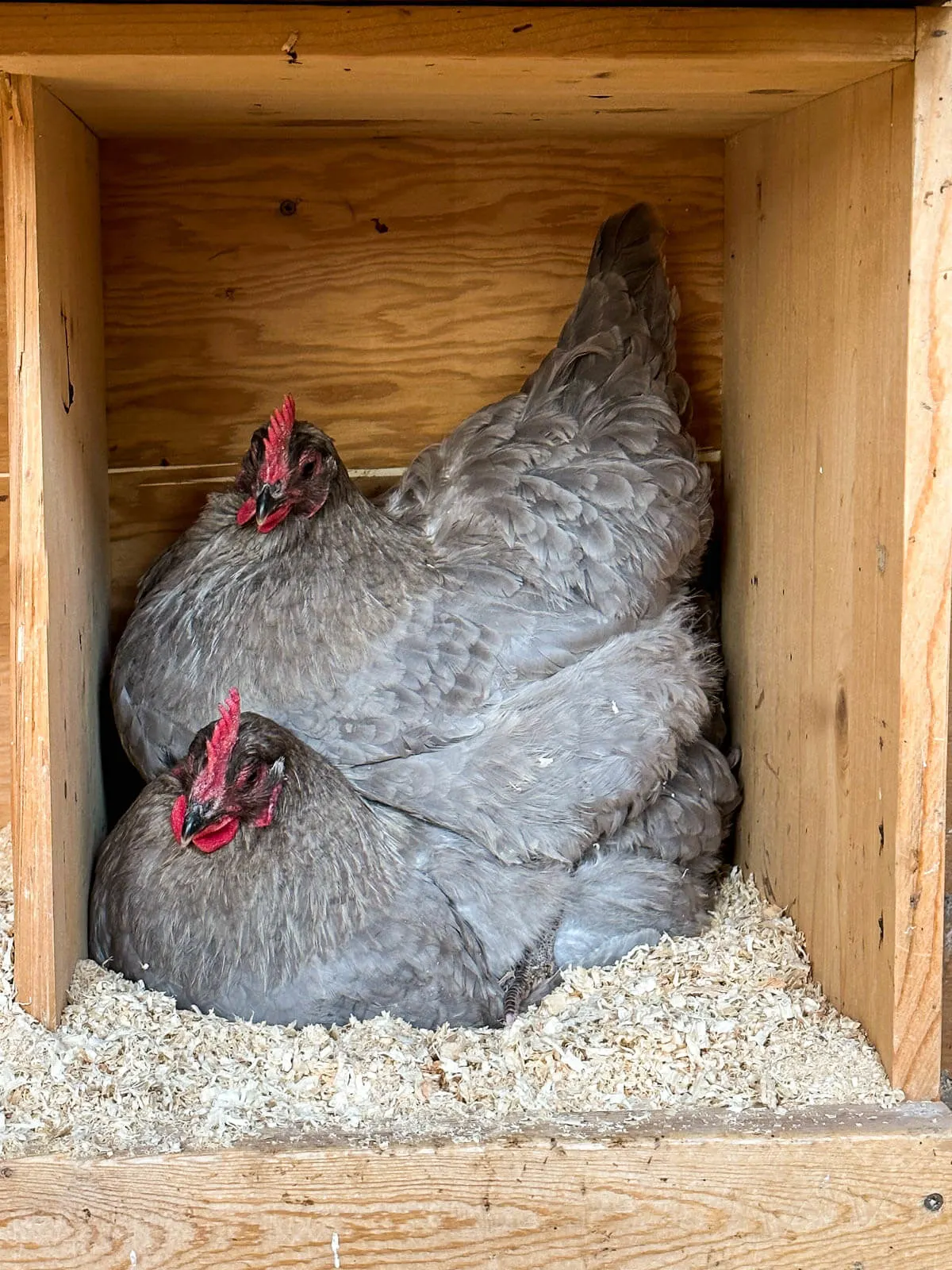
Health Concerns:
Your hen will spend a ton of her energy and sacrifice her health, risking malnourishment to hatch eggs. During this phase, a hen leaves the nest only once or twice a day to eat and drink. As you can imagine, this puts a tremendous strain on her body.
Broody hens are more likely to have mite and lice issues due to their lack of dust bathing and leaving the nest. This is more serious than it sounds and can actually turn fatal, as your hen will continue sitting, suffering.
Full Coop:
When your coop is at capacity, it's pretty hard to add more chicks to the mix. Even when the chicken math is mathing!
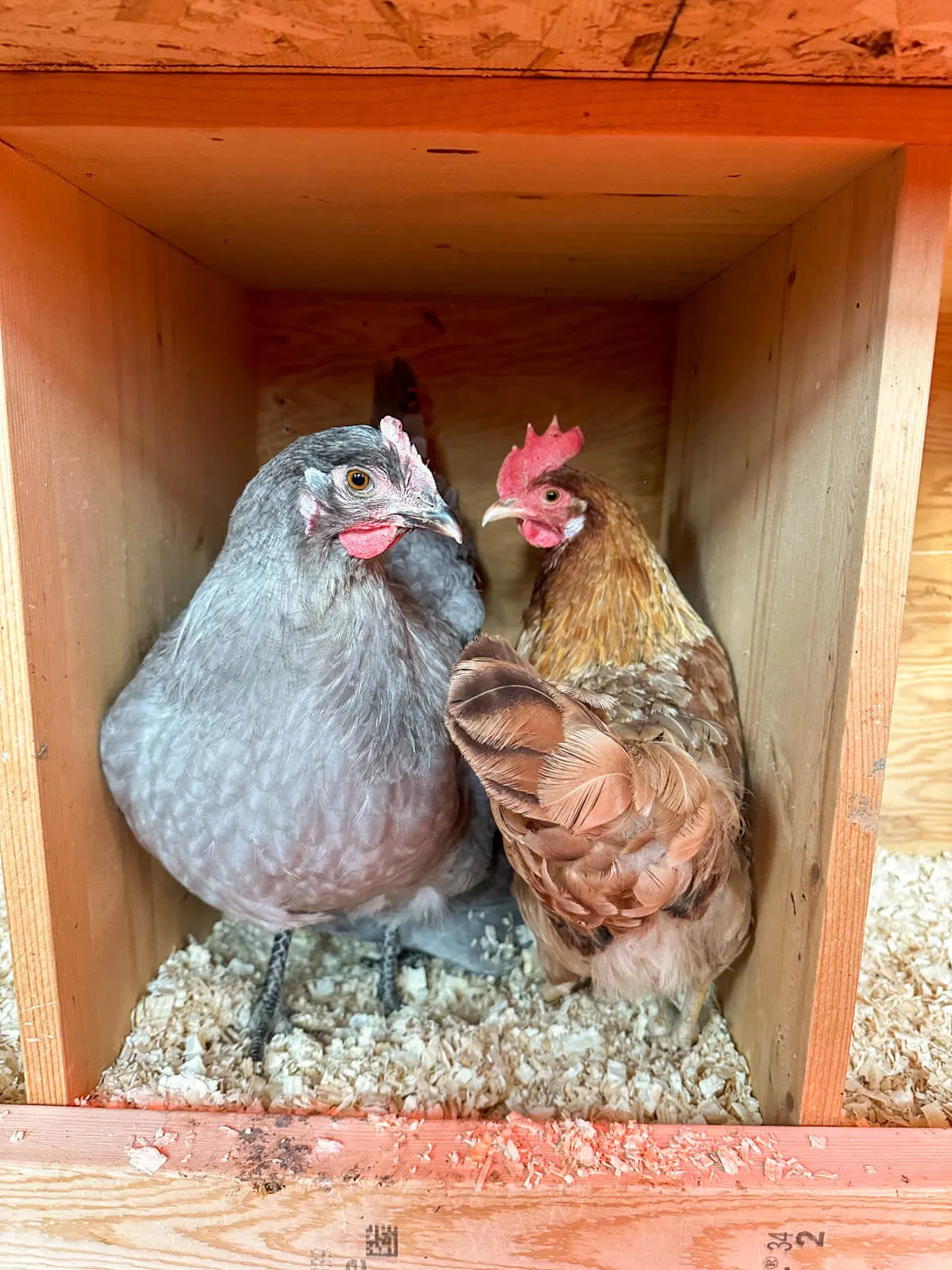
Bad Timing:
Sometimes it's just not a good time! Early in the spring, the middle of winter, or going into fall can all be bad times to hatch chicks.
Although your hen will do her best to keep the babies warm, it is obviously much harder to do when the weather conditions aren't favorable.
No Fertilized Eggs:
If you don’t have a rooster in your flock, there are no fertile eggs for her to hatch even if the hen sits on them for weeks. This is a waste of everyone's time!
It's Been Too Long:
Once in a while, even though you do all the right things to break a hen of being broody, you just can't but you can wait a while to see if she snaps out of it on her own. BUT sometimes, your hen will continue to be broody, despite your best efforts, and at that point, it's important to break the broodiness for her own health.

How To Break A Broody Hen
Regardless of the reason behind your desire to break a broody hen, there are numerous ways to do it.
Option 1: Move The Eggs
Sometimes, if you're lucky and you catch the broody vibes early enough, you can stop it in its tracks by continually removing eggs from the nesting boxes. There's something about a visual clutch of eggs that kind of entices hens to sit, and I find that if I collect them very often as soon as I notice someone going broody I can stop it in its tracks.
This is the most gentle option, but it definitely takes more time and effort as you'll be scooting to coop often. If time is what you're lacking, rollaway nesting boxes are a great option.
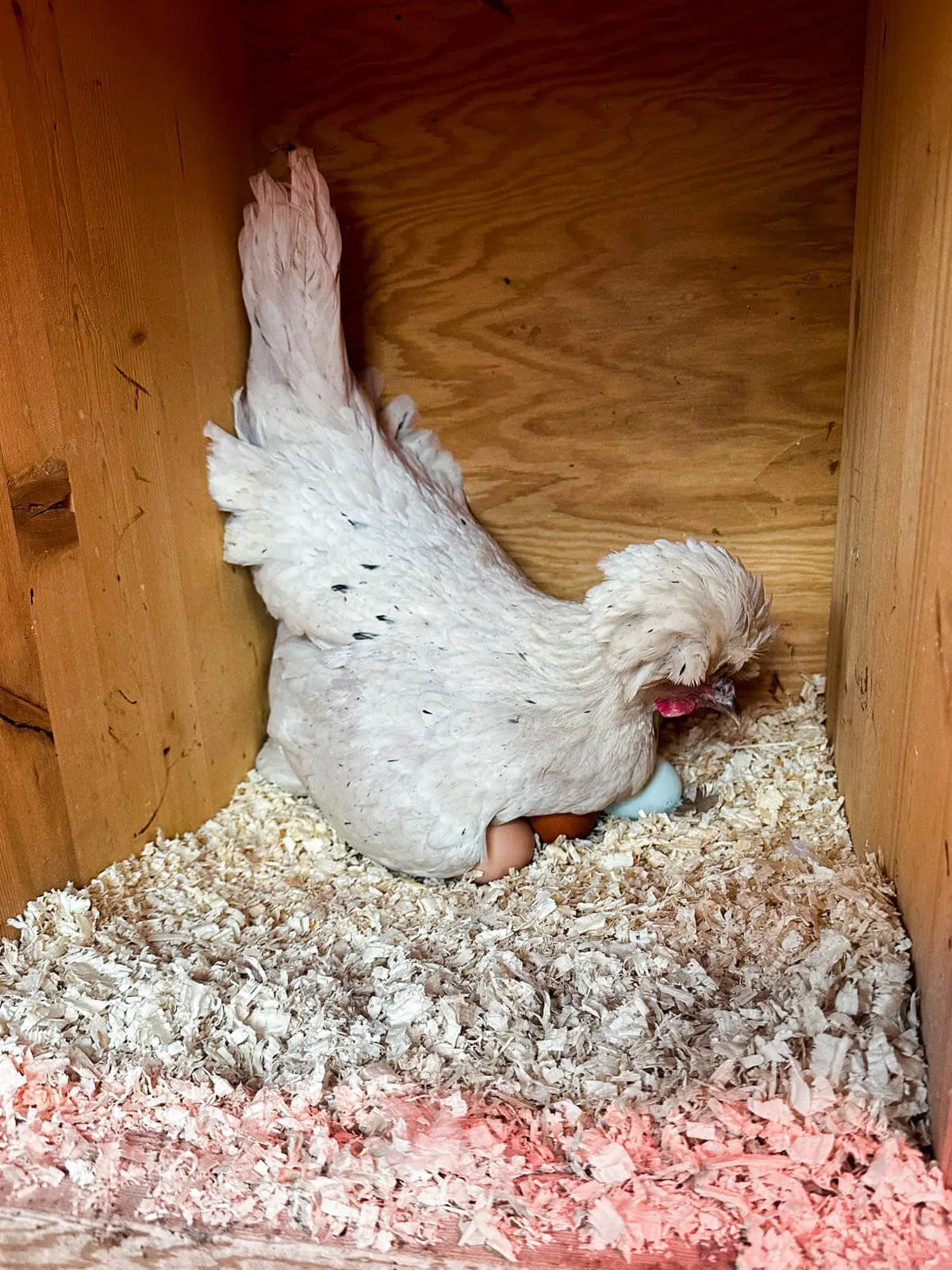
Option 2: Move Her
If removing the eggs from the nesting boxes often isn't enough, the next step is to remove the hen. Often.
She's not going to like it and she will definitely put up a fight. I like to put my broody gals in a football hold while carrying them - Chances are your gal is going to puff up her feathers, grumble and run around like she's on the warpath. The rest of the birds will understand and give her a wide berth.
Simply placing the hen on the floor of the coop will not do, she will likely scoff at you and hop right back into the nesting box, it's best to remove her from the coop completely and put her in the run. This is a great time to offer scratch or treats.
It's important to give that grouchy gal a change of scenery and give her some time with her flock to distract her from nesting and encourage her to eat and drink.

Option 3: Distraction
This option deals in FOMO. Chickens absolutely have a fear of missing out - have you ever seen one peck a single speck and then the entire flock runs over?
If you've been saving an extra special treat for your flock and you've got a broody hen, now is the perfect time to serve that up! Try to offer them a new "toy" or treat that will occupy them long term. When Jules went broody into the fall, we gave the flock an entire pumpkin and that was the ticket!
Integrating new birds into the flock is also a great option - your broody chicken will not be able to resist the urge to get to know the new birds and help establish herself within the new pecking order.

Option 4: Lock Out
This option can be done in conjunction with the previous options if you need a little extra oomph.
Once the other hens have laid their eggs for the day, you can simply lock them all out of the coop. This encourages your clucky girl to keep herself busy outside.
Obviously, this shouldn't be done when it's pouring rain, ultra hot, or very cold - or any other time that your flock may need access to the coop for protection or shelter. If you're going to lock the flock out of the coop, it's important they have access to their food and water outside.
Option 5: Make Her A Roost-er
Another great, gentle option is to go into the coop at nighttime and remove your hen from the nesting box and place her with her flockmates on the roosting bars.
Chickens don't see well in the dark and it's unlikely that she will be brave enough to hop down from the roost and get back into the nesting box.
This is really easy if you're like us and do nightly beak counts and chicken checks!
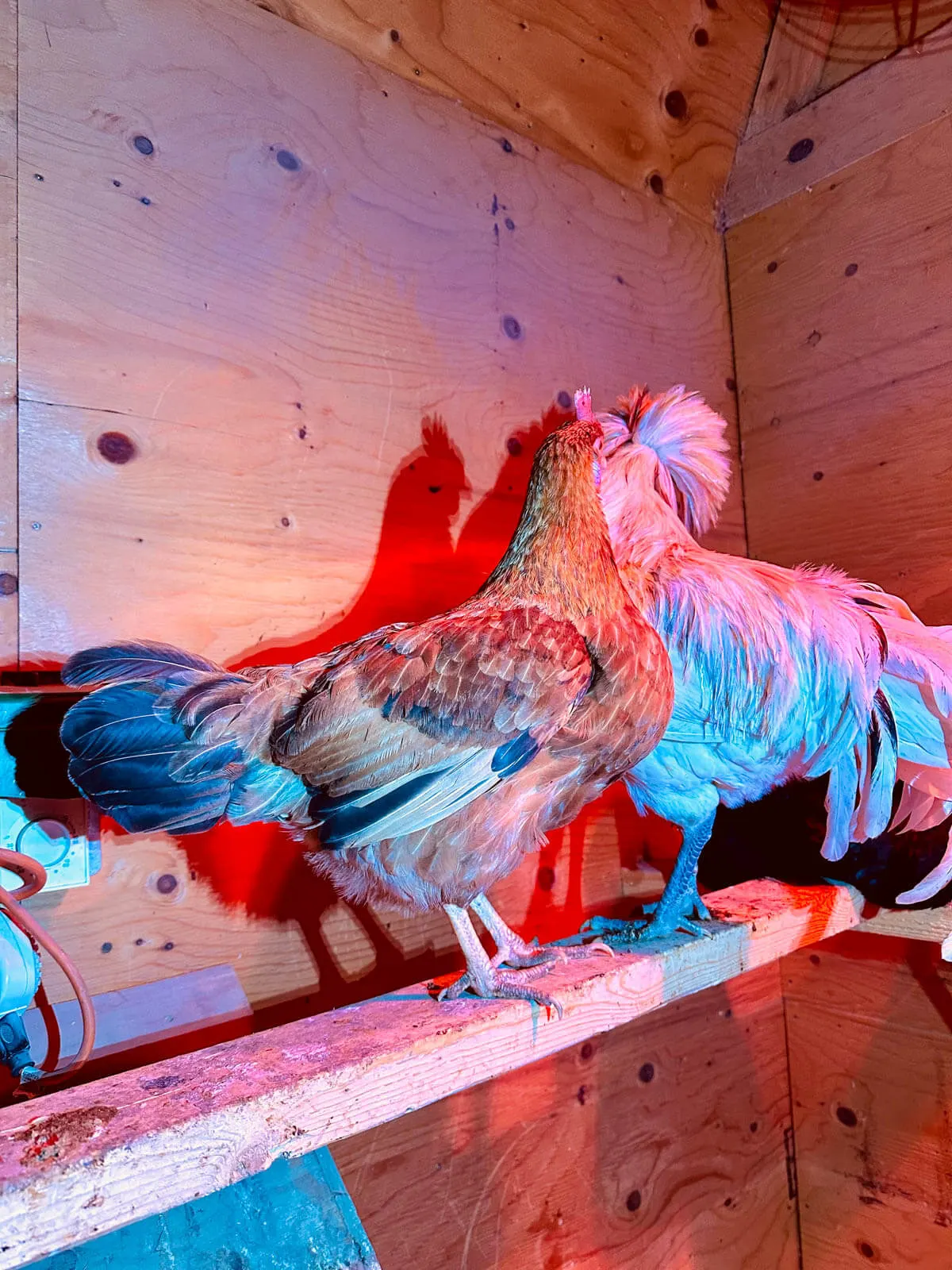
Option 6: Cool Off
If the previous options don't work, it's time to break out the big guns. I haven't used this method personally, but many chicken tenders swear by it.
By this point, your hen is hopelessly, completely broody and she needs a major shake-up to break her broody. One way to do that is to make her uncomfortable and reduce her body temperature.
Broody hens tend to pluck their breast feathers, so an easy way to cool them down is to place an ice pack or frozen water bottle underneath them in the nest. This should make it uncomfortable for her to stay in the nest without harming her.
The other option is to give her a cool water bath. Fill a small tote with cool water - not frigid, but cool, and carefully lower your hen into the water. You want to ensure that your hen is submerged up to her bare breast. Use this time to give her a good scrub, cleaning those super fluffy poop collectors (feathers) around her vent.
If she bucks the cool bath, which will most likely happen, try to calm her with treats. You only need to keep her in the bath for about 5 minutes before you can take her out, give her a towel dry, and place her in the run with the rest of the flock.
Again, these methods are only options when the weather is appropriate - you'd want to avoid chilling your hens in the dead of winter.

Option 7: Jail Time
I have never used this method but many chicken keepers swear by broody breakers or broody jail.
Usually, a broody jail is made out of a wire dog crate and all that's in them are the bare essentials and no comforts. Food and water must be provided at all times while your hen is in the broody jail, but bedding and nesting bars are not.
Many chicken keepers even remove the removable bottom pan from the crate and place it on bricks or wooden blocks to keep it off the ground to ensure the hen gets lots of airflow to cool her bare breast.
Usually, you'll keep her in chicken jail for 24 hours and then let her out. Once she's out, watch her behavior - if she runs back to the nest, she has not been rehabilitated - back in she goes for another 24 hours.
Broody breakers usually work quickly because the main tenet of this method is creating discomfort. By removing nesting materials and roosting bars, you are making the hen so uncomfortable that she no longer wants to sit on the nest.
Option 8: Let Her Be
In the words of Hootie and the Blowfish; let her be.
One way to break the broody is to let her hatch!
This happened to us. When we returned from our family holiday this year, one of our Isbar hens was broody. It was still the middle of winter - we were already brooding 24 chicks in our brooder, and it was a poor time to hatch out more.
I tried and tried, and tried. But my perseverance was no match for Judy's hormones. We tried options 1 through 5 - for 2 weeks. But she laughed in my face. I was not able to plunge her due to the weather, and we decided instead of broody jail, we'd put her in the maternity ward.
She successfully hatched 4 out of the 5 eggs we gave her, and I'm happy to report that Big Broody Judy is a great mom! This is not the most orthodox way to break a broody hen but it worked for us.
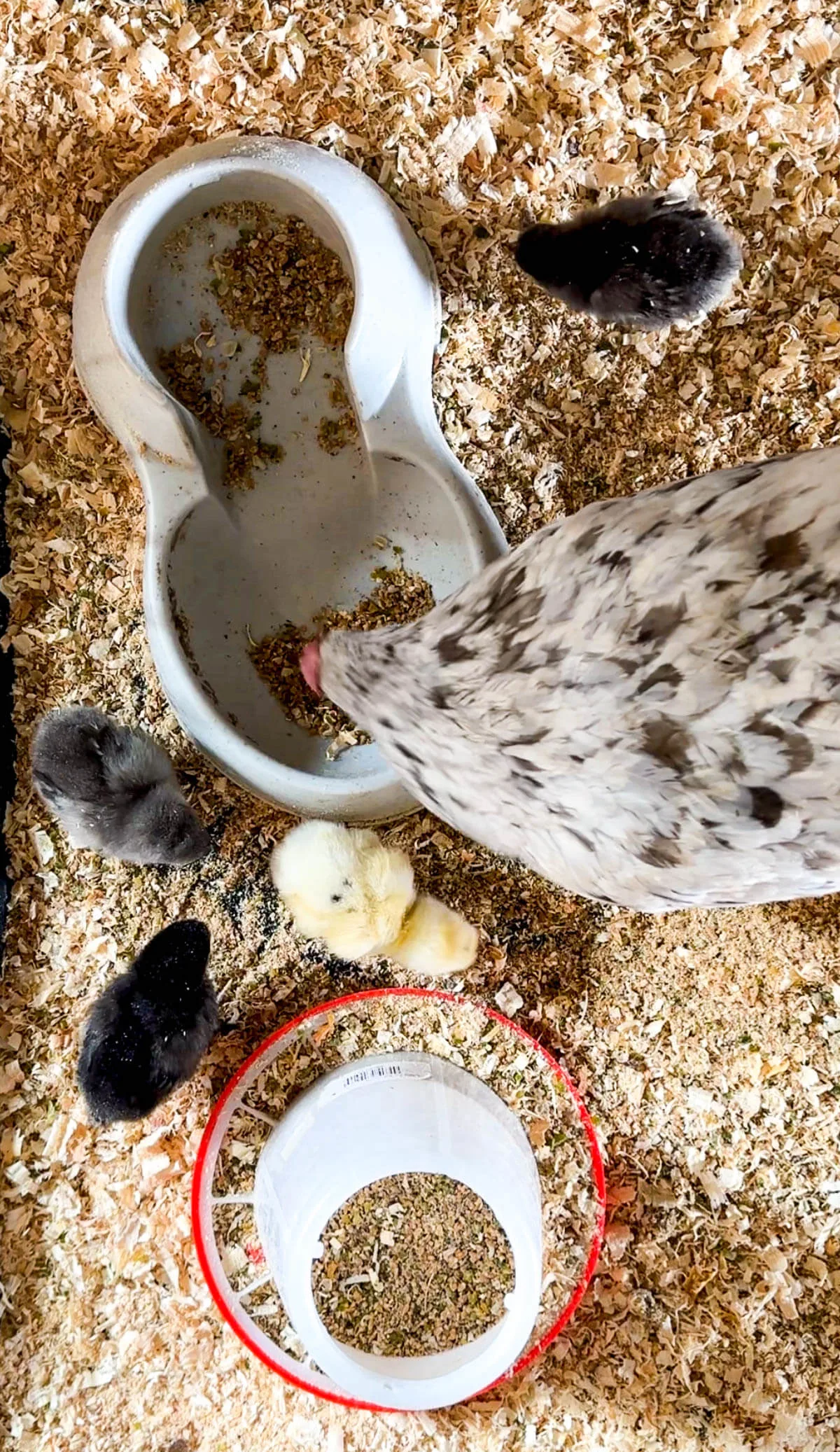

FAQ
Broody hens will sit on their nest for extended periods of time, sometimes even overnight. They may become aggressive or defensive when you approach them and may fluff up their feathers and make a low clucking sound.
It takes 21 days to hatch chicks, so usually a hen will be broody for 3 weeks, but sometimes they don't get the memo and continue brooding which can make it necessary to break her broodiness.
It can take anywhere from a few days to a few weeks to break a broody chicken, depending on the method you use and the temperament of your hen. Be patient and consistent with your approach, and monitor your hen's behavior closely to ensure she's not returning to her broody state.
Hens will most commonly go broody in the spring months, the warming weather and the longer daylight hours signal her body that it's time to start hatching out the next generation.
This is not a hard and fast rule, our Jules went broody in October and Judy went broody in late March. Your chicken can go broody whenever!
Depends on how often you collect them. If you're trying to break her broodiness and you're collecting eggs multiple times a day, definitely.
If you have a rooster and broody hen but haven't made it to the coop in a couple of days, that egg might be better fed to the pigs as the development may have started.
Thoughts From The Chicken Coop
Breaking a broody hen can be difficult and time-consuming but the effort is worth it if you don’t want your hen to hatch out chicks. There are many different methods for breaking your hen from her broodiness, such as removing her from the nesting box, providing an ice pack or cool water bath, using a broody breaker jail, or simply allowing her to hatch.
Choose the method that best suits your chicken and whatever you do, be patient – breaking a broody hen requires persistence! With time and consistency, you can help your hen break her broodiness and get back to being the egg-laying superstar she is.
Pin How To Stop A Broody Hen Guide!

